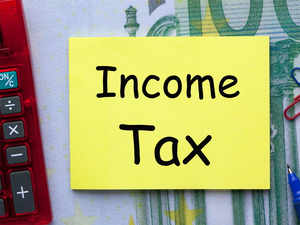

The changes announced in the new tax regime in Budget 2023 say an individual will not have to pay any taxes if the taxable income does not exceed Rs 7 lakh in a financial year. However, salaried individuals and other taxpayers must not confuse this with the basic exemption limit under the new tax regime.
The Budget 2023 has hiked the basic exemption limit to Rs 3 lakh from Rs 2.5 lakh currently. Thus, an individual's income becomes taxable if it exceeds Rs 3 lakh in a financial year. However, to reiterate, no tax has to be paid if the taxable income does not exceed Rs 7 lakh under the new tax regime.
According to the Income-tax Act, the rebate under Section 87A is available to only resident individuals. Taxpayers such as non-resident individuals (NRIs), Hindu Undivided Family (HUF) and firms are not eligible for the rebate under Section 87A.
The tax rebate is available under both the tax regimes - the old as well as new tax regimes. Till FY 2022-23, the amount of tax rebate available under both the tax regimes would be the same. Any individual opting for the new tax regime for any financial year till FY 2022-23 (ending on March 31, 2023) would be eligible for a tax rebate of Rs 12,500 if their taxable income does not exceed Rs 5 lakh in a financial year. Similarly, even in the case of the old tax regime, a tax rebate of Rs 12,500 is available for a taxable income of up to Rs 5 lakh.
In the old tax regime, the taxable income is arrived at after claiming all the deductions and tax exemptions. The new tax regime does not allow common deductions and exemptions till FY 2022-23.
But the amount of tax rebate available under the new tax regime from FY 2023-24 has been increased. This is because the government has revised the income tax slabs under the new tax regime from FY 2023-24.
To make the new tax regime more attractive, the rebate under Section 87A has been hiked to Rs 25,000 for taxable income up to Rs 7 lakh. Thus, an individual opting for the new tax regime in FY 2023-24 will pay zero taxes if their taxable income does not exceed Rs 7 lakh.
No change has been made in the tax rebate under Section 87A available under the old tax regime for FY 2023-24.
The steps to claim tax rebate under Section 87A depend on the income tax regime chosen by you.
If you are opting for the new tax regime
Step 1: Calculate your gross total income from all the sources.
Step 2: Once calculated, deduct all the deductions that you are eligible for. In FY 2022-23, an individual is eligible for Section 80CCD (2) for employer's contribution to the employee's NPS account. From FY 2023-24, a salaried employee is eligible for a standard deduction of Rs 50,000 as well.
Step 3: Once the deductions are deducted from gross taxable income, you get the net taxable income. If your net taxable income does not exceed Rs 7 lakh, you are eligible for the tax rebate under Section 87A. This rebate will be automatically taken into account at the time of filing the income tax return. The tax payable will be shown as zero.
If you are opting for the old tax regime
Step 1: Calculate your gross total income from all the sources.
Step 2: Once calculated, deduct all the deductions that you are eligible for. No changes in income tax slabs and rates have been announced for the old tax regime. Hence, an individual can claim all the tax exemptions - such as HRA, LTA and deductions sections 80C, 80D etc.
Step 3: Once the deductions are deducted from the gross taxable income, one gets the net taxable income. If your net taxable income does not exceed Rs 5 lakh, you are eligible for the tax rebate under Section 87A. This tax rebate will be automatically taken into account at the time of filing the income tax return. The tax payable will be shown as zero under the old tax regime.